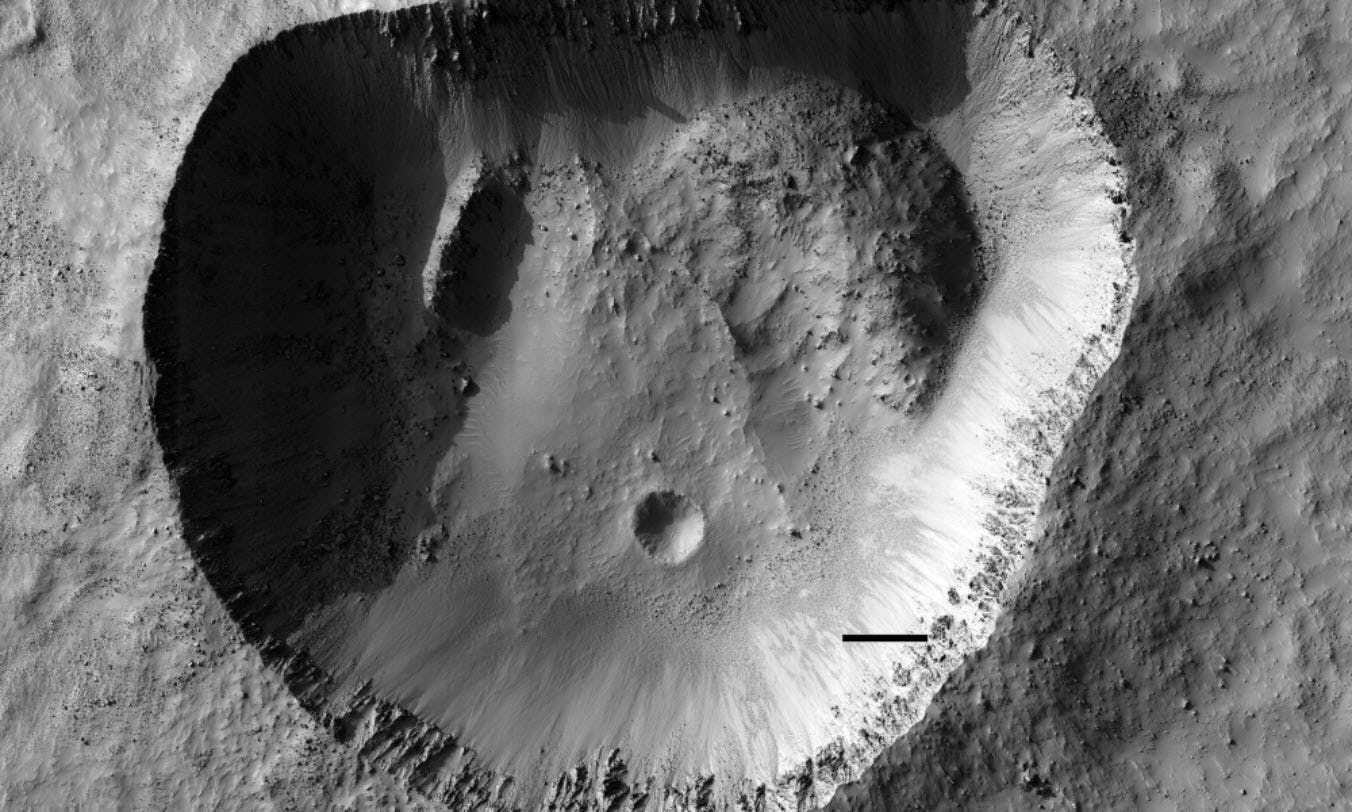
Most impact craters are usually circular and fairly symmetric, but not all. This odd-shaped crater on Mars is obviously an impact crater, but it has a unique oblong shape. What happened?
Most craters are circular in shape due to material ejecting out in all directions as a result of an impact. Below is a group of impact craters in Noachis Terra, a large region in Mars’ southern hemisphere. These are all classified as simple craters, which are small bowl-shaped, smooth-walled craters.

Complex craters, on the other hand, are large craters with complicated features, such as terraces, central peaks, and rims and walls their own features. Oblong craters, like the one in the lead image — which is also located in Noachis Terra — can sometimes be created by impacts striking the surface at a very low grazing angle.
But scientists from the HiRISE (High-Resolution Imaging Science Experiment) camera on the Mars Reconnaissance Orbiter don’t think that would explain this crater’s shape. It is definitely a complex crater, and it has some tell-tale features that might explain its unique shape.

The HiRISE team points out that large blocks of material in the northeast and northwest corners look like they have slid into the crater. These collapses have extended the crater in those directions giving it an oblong appearance.
For comparison, here’s an oblong impact crater where the shape is due to a small body striking the surface at a very shallow angle. This platypus-tail-shaped depression is called Orcus Patera, which is obviously an older feature since newer impact craters dot its surface.
You can see all shapes and kinds of craters in incredible detail at the HiRISE website. HiRISE is the most powerful camera ever sent to another planet and is one of six instruments onboard the Mars Reconnaissance Orbiter. It has taken hundreds of thousands of high-resolution images of Mars's surface since it arrived in orbit of the Red Planet in 2006.
This article originally appeared in Universe Today.







